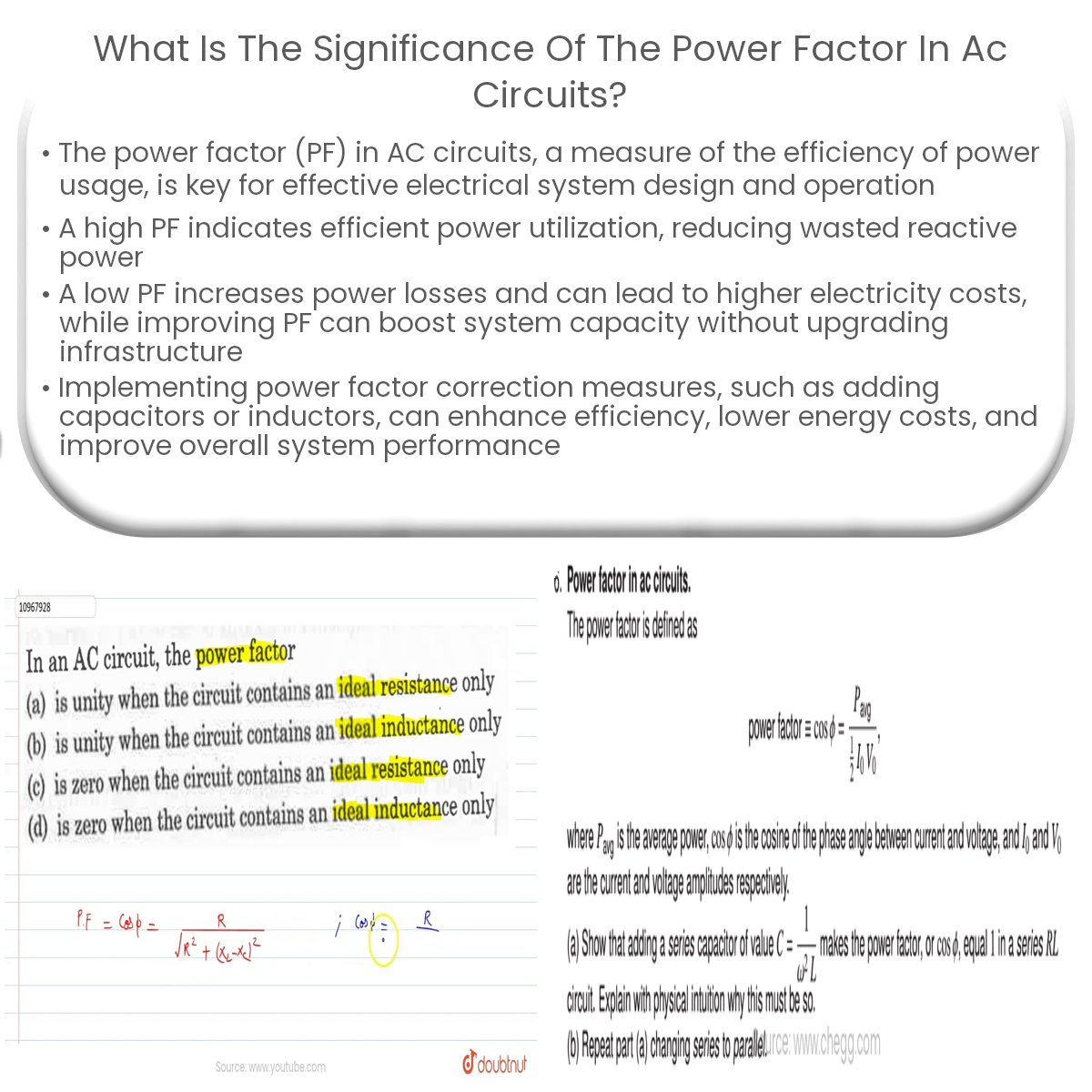The power factor is significant in AC circuits as it affects energy efficiency, power losses, costs, system capacity, and equipment lifespan.
Significance of Power Factor in AC Circuits
The power factor (PF) in AC circuits is a measure of the efficiency of power usage. It is a dimensionless number ranging from -1 to 1, with a higher value indicating more efficient power utilization. Understanding its significance is crucial for the effective design and operation of electrical systems.
Energy Efficiency
Power factor indicates how effectively an electrical system converts supplied voltage and current into useful work. A power factor of 1 (or close to 1) means that the circuit is efficiently using the supplied power, whereas a lower value indicates poor utilization, with more energy being wasted as reactive power.
Reduced Power Losses
A low power factor can result in increased power losses due to the higher current flowing through the circuit. These losses appear as heat in conductors and electrical devices, leading to decreased efficiency and potentially shorter equipment lifetimes. By improving the power factor, power losses can be minimized, enhancing the overall efficiency of the electrical system.
Cost Savings
Utility companies often charge customers based on both the real and reactive power usage. A low power factor can increase the overall power consumption, leading to higher electricity bills. By improving the power factor, businesses and industries can reduce their energy costs and lower their carbon footprint.
Increased System Capacity
Improving the power factor can free up additional capacity in the electrical system. A lower power factor means more current is needed to supply the same amount of real power, potentially causing transformers, cables, and other components to be overloaded. By raising the power factor, the system’s capacity can be increased without upgrading infrastructure, making it more cost-effective.
Power Factor Correction
Given the significance of power factor, it’s essential to implement power factor correction measures. Common techniques include adding capacitors or inductors to the circuit to balance the reactive power and using synchronous condensers or variable frequency drives to adjust the power factor dynamically. These methods can lead to improved efficiency, lower energy costs, and better overall performance of the electrical system.
Conclusion
The power factor plays a crucial role in AC circuits, with a significant impact on energy efficiency, power losses, costs, system capacity, and equipment lifespan. By understanding and addressing power factor issues, engineers and businesses can optimize their electrical systems, minimize waste, and reduce operating costs.


